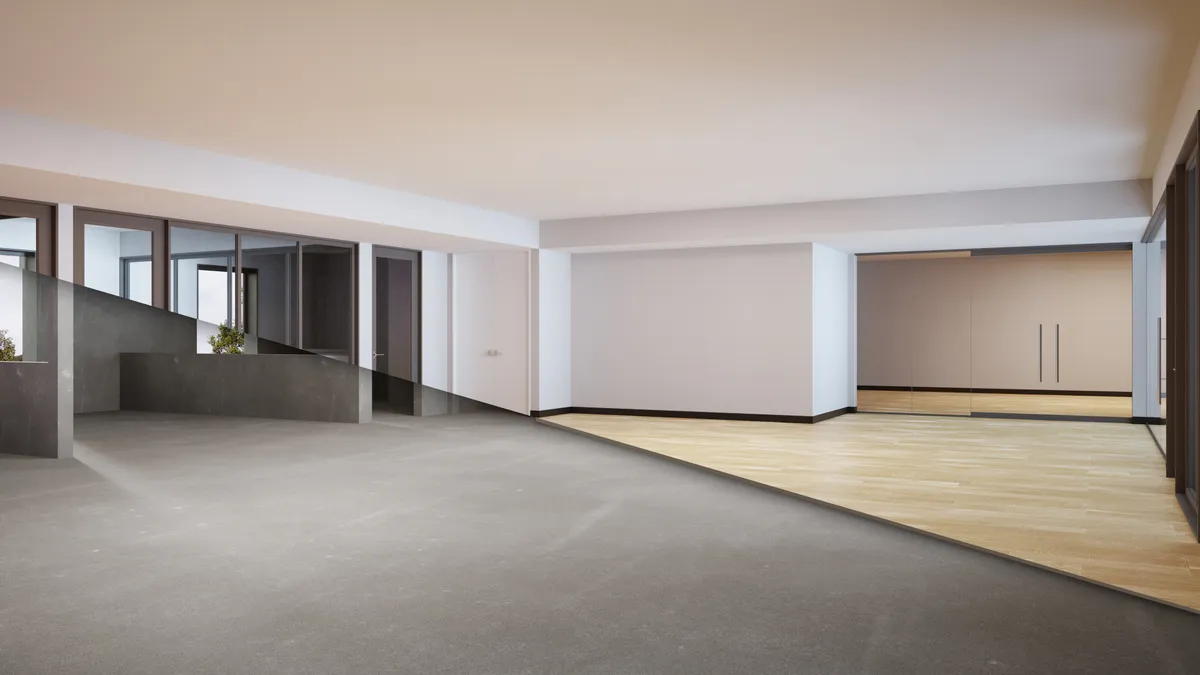Dive Brief:
- Around 25% of the office buildings Gensler assessed meet the criteria for potential office-to-residential conversion, according to the latest data from research it updated in October.
- The study, which initially looked at 300 buildings in 25 cities across North America, was expanded to more than 1,000 potential conversion sites. The research provides a ballpark measure for building owners to quickly assess the suitability of aging office buildings for conversion, the company says.
- Where it’s feasible, conversion is an “unprecedented opportunity” to create new residential stock “quickly, sustainably, and at a 30% lower cost than new construction,” Steven Paynter, principal at Gensler, said in a blog post.
Dive Insight:
In a shift that has impacted the commercial real estate landscape, tenants are increasingly abandoning older office buildings in favor of newer and more versatile spaces. Owners of aging office buildings are grappling with growing vacancies and dwindling cash flows, putting billions of dollars in office-backed loans at risk,
Gensler said U.S. office vacancies reached a 30-year high in the second quarter of 2023, according to the Council of Economic Advisers. That trend, coupled with a growing shortage of affordable housing, has led adaptive reuse projects to reach record highs and continue to gain momentum. The White House recently pledged $350 million to help states, local governments and developers make conversion projects more economically feasible.
Factors including building form, location and floor plate size helped Gensler determine a building’s suitability for adaptive reuse into housing. Gensler notes that “unpleasant” office features, like low ceilings, can be translated into desirable attributes for a residential building by removing office ducts, lights and drop ceilings to make way for “luxurious” 11-foot clear ceiling heights.
In its initial research, Gensler compared existing Class C office buildings with market-ready residential structures in concert with Calgary Economic Development in fall 2020, creating an algorithm to score 6 million square feet of buildings in the city’s downtown core. Now, developers in the city have five office conversion projects underway and 10 more in development, Paynter noted in his blog. He said he expects these initiatives to increase the number of residential units there by 24%.
The success in Calgary has prompted over a dozen cities and more than 100 building owners across North America to seek similar solutions for their struggling Class C and B buildings, Paynter said in the blog post. Projects including Franklin Tower in Philadelphia; 1 St. Clair West in Toronto, Ontario; and The Residences at Rivermark Center in Baton Rouge, Louisiana, show how outdated office buildings can be reconfigured into amenity-rich residential communities, adding value to the cityscape, Paynter wrote.













